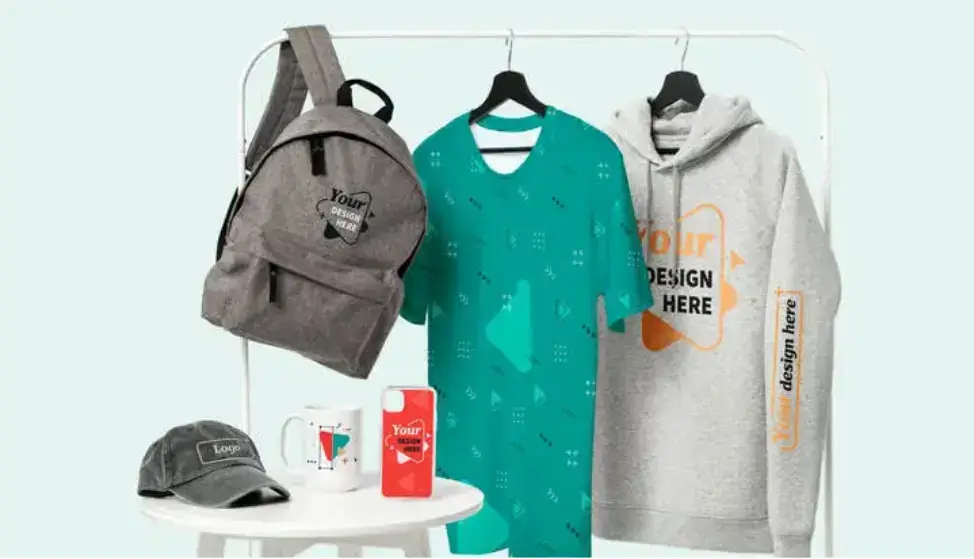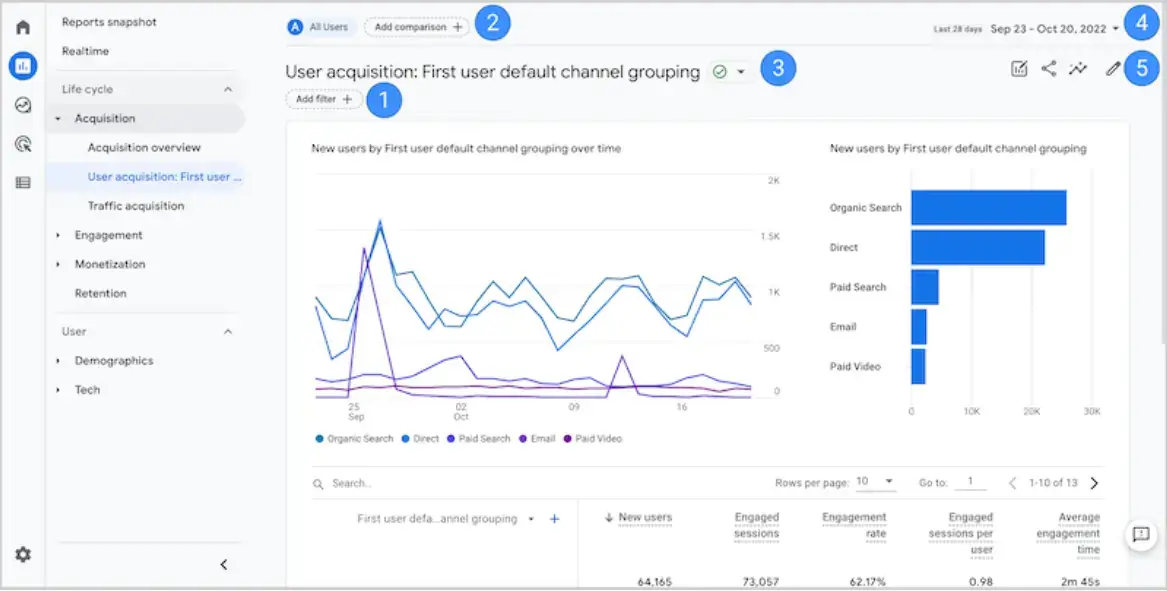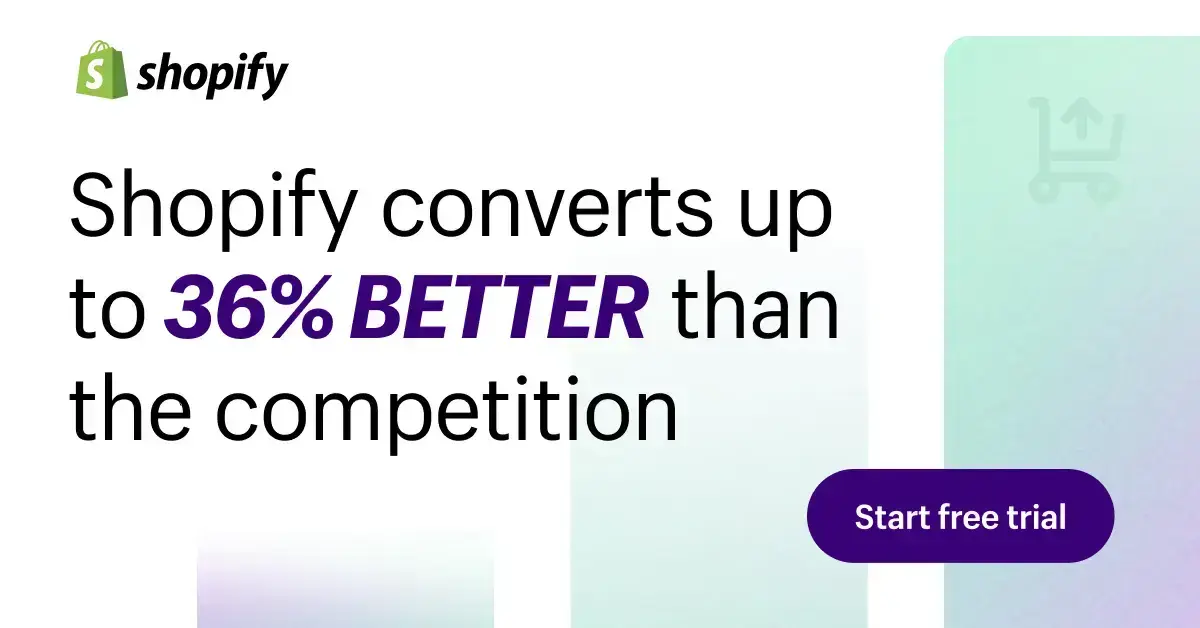Have you ever dreamt of starting an online business but worried about huge inventory costs?
Welcome to the era of Print-On-Demand (POD) – a perfect e-commerce store solution that lets you sell customized products with zero upfront investment.
This comprehensive step-by-step guide will walk you through setting up your own POD business on Shopify, simplifying each stage from choosing a provider to marketing your store.
The exciting world of eCommerce awaits – are you ready for the journey?
In this article:
- Understanding Print-on-Demand
- Why Choose Shopify for a Print-on-Demand Business
- Step-by-Step Guide to Starting a Shopify Print-on-Demand Business
- Marketing Your Shopify Store
- Advertising & Scaling Your Shopify Store
- Monitoring and Optimizing Your Shopify Store
- Print-on-Demand Business FAQs

Understanding Print-on-Demand
Let's dive into print-on-demand (POD), a revolutionary business model that reshapes e-commerce.
Print-on-demand is an order fulfillment method where products with customized designs are printed only once an order is placed. It mitigates the financial regret and logistical nightmare you may encounter stocking bulk inventory without concrete sales assurance.
The power behind POD lies in its innovative practice - no upfront investment for stock or large printing equipment, just creativity and clever marketing!
You can concentrate on creating impeccable designs while your chosen print-on-demand provider handles production, packaging, and delivery. This process helps reduce risk and cost for businesses while providing endless opportunities to test diverse product lines.
So whether it be eclectic T-shirts, custom hoodies, quirky socks, or personalized tote bags - with POD, your imagination becomes a tangible product at no initial cost.
Why Choose Shopify for Your Print-on-Demand Business
Choosing Shopify for your print-on-demand business comes with several remarkable advantages.
First, as an e-commerce giant trusted by small and large companies worldwide, Shopify offers unbeatable ease of use and stellar functionality. It's designed to help even those without any technical background create stunning online stores within minutes.
The 14-day trial period is a bonus, allowing you enough time to navigate and familiarize yourself with the platform before committing fully. Moreover, integrating more than 90 print-on-demand service providers into its platform is another plus for Shopify users.
This vast selection gives entrepreneurs like you the flexibility to pick the right services that align best with their business model and customer demands — from choosing among top-rated providers like Printful, Printify, SPOD, and CustomCat to other alternatives.
What sets Shopify apart in the print-on-demand niche is also its seamless handling of retail transactions through sophisticated order fulfillment processes.
Once orders come in from your store, they're automatically sent to your chosen provider, who then handles printing down to packaging and shipping of products directly to customers on your behalf. And let’s not forget about scaling up - a critical part of growing any business.
With functionalities geared towards scalability, such as tracking sales or analyzing customer behaviors using e-commerce analytic tools provided by Shopify apps. It becomes stress-free for businesses like yours, focusing on growth strategies rather than getting bogged down in operational complexities.
Last but not least - customization options coupled with high-quality prints; this is, at heart, what makes your product stand out! Shopify’s efficient customization settings and high-quality output from preferred print-on-demand partners can determine how well you can cater to designs ideally suited for today's consumers.
Benefits of setting up a print-on-demand store on Shopify:
- Quick and efficient setup
- Abundance of service providers
- Managed shipping & inventory
- Smooth transactions & scalability
- Uniquely customizable products made possible by high-quality prints.
Shopify has got all these covered making it an excellent choice where starting a successful print-on-demand business looks less daunting.
Step-by-Step Guide to Starting a Shopify Print-on-Demand Business
- Setting up your Shopify store
- Adding a Print-on-Demand Provider
- Setting up your product portfolio
- Setting up Shopify store designs
- Setting up your inventory
- Launching your Shopify store
1. Setting up your Shopify store
Initiating your Print-on-Demand business begins with setting up a Shopify store. As the foremost e-commerce platform, Shopify offers an intuitive interface and an array of features to launch your online enterprise.
Start by signing up for their 14-day free trial to explore functionalities without investing upfront.
Make sure you spend some time coming up with a good Shopify store name. This will be how people find and remember you and it can have a major impact on your sales, revenue and longevity.
Select a visually appealing theme that aligns with your brand image, proceed to add an eye-catching logo, and set up essential pages such as 'About Us', 'Contact Us', etc., which are integral parts of any successful store.
Enabling Shopify Payments is next, ensuring streamlined transactions across diverse currencies—thus expanding your market reach globally.
Lastly, comb through all settings; this fine-tuning process helps optimize the customer navigation experience in your shop while mitigating potential hiccups down the road.
See more: How to Start with Shopify in 11 Easy Steps [2024]

2. Adding a Print-On-Demand provider
You have several options to add a Print-On-Demand Provider to your Shopify store. Popular providers like Printful, Printify, Gooten, and CustomCat offer integrations with Shopify that make connecting and syncing your products easy.
When choosing a provider, consider factors such as their product selection, quality of prints, shipping times to your target audience's location, and any additional services they offer, like managed inventory and fulfillment.
Choosing the right service provider is critical in starting your print-on-demand business on Shopify. Here are some of the most popular companies to consider:
- Printful: Known for its quality products and integration with Shopify, Printful offers your customers product personalization options.
- Printify: This provider stands out with its generous policies, providing free replacements or refunds for damaged products or manufacturing errors.
- Gooten: Gooten is a global network of print-on-demand manufacturers offering a broad range of products and shipping options.
- Print Aura: This option is perfect for businesses looking for white-label solutions, as Print Aura allows for custom branding on packaging and products.
- Pixels: Pixels is an excellent choice for artists and creators, offering a vast range of products for your designs.
- Kite: The Kite App directly integrates with Shopify, allowing you to sell your unique designs on a range of products quickly.
- Inkthreadable: Based in the UK, Inkthreadable is an excellent option for businesses targeting the European market.
- CustomCat: Known for its fast production time and diverse product line, CustomCat is a competitive option for your print-on-demand business.
These providers integrate smoothly with Shopify, ensuring an efficient process from creating your designs to delivering them to your customers.
Once you've selected a provider, simply install their app from the Shopify App Store and follow their setup instructions to add products from their catalog to your store.
With a print-on-demand provider in place, you can now offer a wide range of custom products without worrying about inventory or fulfillment logistics - it's an efficient way to bring your design ideas into reality!
Learn more about Shopify Fulfillment Pricing
3. Setting up your product portfolio
Starting your print-on-demand business on Shopify involves careful consideration of your product line. Conducting thorough market research to identify popular niches and trends is crucial.
Tools like Google Trends, Ahrefs, and Semrush can provide valuable insights into what consumers are currently interested in and help you forecast upcoming trends.
Another crucial step is identifying a specialized market segment that aligns with your interests and expertise. By focusing on a specific niche, you can cater to a targeted audience and differentiate your brand from the competition.
This approach can also help you create designs that resonate more deeply with your customers, tailored to their interests and needs. The potential for customization is critical when choosing products for your print-on-demand business.
Items such as t-shirts, hoodies, socks, tote bags, and die-cut stickers are trendy because they offer a broad canvas for your designs.
These products allow customers to express their individuality, making them more likely to purchase.
Finally, analyzing the competition on platforms like Amazon and eBay is essential. By understanding which products are in high demand, you can make informed decisions about what to include in your product line. This competitive analysis can also help you identify gaps in the market that your business could fill.
4. Setting up Shopify store designs
You have a few options to set up designs and inventory for your print-on-demand business. You can create your designs from scratch if you're proficient in design software like Photoshop or Illustrator.
However, if you need design skills or prefer a professional touch, you can hire a designer through Fiverr or Etsy to create custom product designs or use AI design tools to generate unique designs.
They are user-friendly and require no design skills, making them an excellent option for those who need to be more design-savvy. Your designs are the heart of your products and must resonate with your target audience.
Here are some tips to help you create designs that not only look good but also appeal to your potential customers:
- Research current design trends and popular themes in your target market.
- Look for inspiration on design websites such as Designious or Pinterest.
- Collaborate with other designers or join online communities to gain feedback and improve your designs.
- Experiment with different colors, fonts, and layouts to create visually appealing products.
- Ensure that your designs suit the printing process offered by your chosen Print-On-Demand provider.
5. Setting up your inventory
Once your designs are ready, it's time to organize your inventory. It involves uploading your designs to the chosen print-on-demand platform and linking them to specific products.
Ensure to follow the guidelines provided by the provider on file formats and dimensions for best results.
Consider starting with a select product range that aligns with your niche or target audience when setting up inventory.
It will help streamline production and ensure better sales opportunities by focusing on what resonates most with customers.
Remember that selecting high-quality images or graphics is crucial for creating visually appealing products that customers will want to purchase. Take advantage of customer preferences by offering personalized products where possible.
Once you have your designs ready, it's time to upload them to your Shopify store. To start listing your products, follow these simple steps:
- Log in to your Shopify admin dashboard.
- Click on the "Products" tab on the left-hand side menu.
- Click on the "Add product" button.
- Fill in the required product information, including title, description, and price.
- Add high-quality images of your products to showcase them effectively.
- Select the appropriate product type and collection for easy categorization.
- Set up variants if you offer different options for a specific product (e.g., size or color).
- Specify inventory details like SKU and quantity available.
- Consider enabling product reviews to build trust and social proof.
- Add relevant tags to improve searchability within your store.
- Optimize your product URLs with descriptive keywords for better SEO performance.
- Set up shipping options based on the location and weight of the product.
- Configure tax settings according to your business's requirements.
- Use meta fields for additional details or customizations, if necessary.
Ensure each product listing includes clear, enticing product descriptions and accurate pricing information. Remember to choose appropriate images for showcasing your products and consider adding variants such as different sizes or colors if applicable.
Optimize each product page by including relevant keywords in the title and description to improve search engine visibility.
6. Launching your Shopify store
Now that you have set up your Shopify store, chosen a Print-On-Demand provider, and created your designs and inventory, it's time to launch your store and start selling!
How to set up payment and shipping options:
- Choose a payment gateway that integrates with Shopify, such as PayPal or Stripe.
- Set up your payment options by connecting your chosen payment gateway to your Shopify store.
- Configure your shipping settings by specifying the regions you want to ship to and the shipping rates for each region.
- Set up shipping profiles for different types of products or regions to simplify the shipping process.
- Determine whether you will offer free shipping or charge customers for shipping.
- Integrate a fulfillment service like Printful or Printify to handle your products' printing, packaging, and shipping.
- Specify any additional information required for international shipments, such as customs forms or import taxes.
- Test your payment and shipping options by placing a test order to ensure everything works smoothly.
Marketing Your Shopify Store
To effectively attract customers to your print-on-demand store, it's essential to utilize various lead generation strategies. These strategies aim to drive traffic to your website and increase brand awareness.
One retail businesses' most effective marketing channel is Google PPC advertising, specifically through Google Shopping ads.
This platform lets you showcase your products directly in search results, targeting potential customers actively looking for similar items.
Establishing a solid social media presence across platforms such as Instagram, Facebook, Twitter, Pinterest, and YouTube is another crucial aspect of your marketing efforts. Regularly posting high-quality content related to your products or industry can help build a community around your brand while increasing visibility among potential customers.
In addition to these strategies, consider leveraging influencer marketing by collaborating with popular social media personalities who can endorse your products to their followers. This approach can effectively promote your print-on-demand business and attract potential customers through digital channels.
Advertising & Scaling Your Shopify Store
To effectively advertise and scale your print-on-demand business, it's crucial to implement a strategic marketing approach. Compelling visuals and engaging ad copy on platforms like Facebook and Instagram can capture users' attention and encourage them to visit your store.
With billions of active users, these platforms offer the opportunity to reach a broad audience and target specific demographics based on interests, behaviors, and location.
Continuously monitor performance using e-commerce analytic tools to track key metrics such as conversion rates and profit margins.
Using a data-driven approach gives valuable insights into the effectiveness of different campaigns, enabling you to optimize future marketing efforts.
Remember that successful marketing requires experimentation and adaptation. Test different strategies and see what resonates best with your target audience. This will drive sustainable sales growth for your print-on-demand store.
See More: Shopify Advertising Costs | The Ultimate Guide





